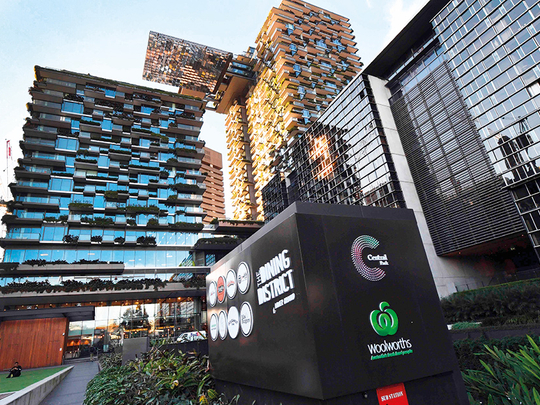
SYDNEY
As Australia’s local merchants struggle with an influx of global names, leading malls are considering returning to their village centre roots to woo new tenants by moving away from shops and offering medical facilities, more restaurants and even amusement parks.
Several top retailers have recently succumbed to pressure from foreign giants such as Japan’s Uniqlo and Sephora of France and with Amazon plotting its debut in the country, the future looks tough.
The response from developers has been to redefine the mall away from a “shopping” focus to become a more community-driven service and entertainment space.
While cafés and restaurants have long helped attract shoppers to malls, they are now filling shopping centres, providing some buzz even as an eerie quiet fills some nearby clothing stores.
With the big global names pouring huge sums of cash into the country, once popular clothing chains such as David Lawrence, Pumpkin Patch, Herringbone, and Rhodes & Beckett have bitten the dust, while others scramble to reduce costs.
This has included cutting back on bricks and mortar stores, and steering centre owners towards food, entertainment, health care and childcare providers.
Major landlords such as Vicinity and Westfield spin-off Scentre, which this year have seen their share prices slip to one or two-year lows, are already redeveloping their arcades.
Vicinity’s Chadstone Shopping Centre in Melbourne, Australia’s largest mall, is now the site of the southern hemisphere’s first massive amusement park Legoland.
The company is also tapping into newer technologies such as facial recognition to identify consumers through their age and gender and analyse their shopping habits.
“What we are seeing is the malls starting to pivot away from commodity-type products ... towards retailers that offer a service which isn’t physical,” real estate firm Cushman & Wakefield’s retail investments head Nick Potter told AFP.
“Shopping centres are the modern village, it’s where everyone comes together. These centres are typically located in the centre of towns, they’ve got strong infrastructure ... and that offers up the ability to move with the times.”
Utopian vision
The move is a return to the vision of Victor Gruen, an Austrian-born American who in the 1950s developed the concept of the arcade as a public space akin to the market place of centuries past, where civic life played a central role.
Adding to the shift is the growth of online shopping, which offers shoppers the same options but with the added bonus of not being subject to general sales tax (GST) for anything below 1,000 Australian dollars (US$760).
Canberra has sought to end the loophole by imposing a 10 per cent levy from next July but the lower margins for online store such as eBay and ASOS still makes them attractive.
While online shopping is estimated to make up a little more than 10 per cent of total retail sales, future arrivals such as Amazon could change that.
“If (online shopping) jumps up in a big way, how does that affect bricks and mortar? Maybe all shopping centres just become cafés,” University of Technology Sydney accounting expert David Bond told AFP.
“You’ll probably see it move more towards just products being sold online, versus services, cafés, cinemas, game centres and crèches (at malls).”
The University of Canberra’s Lisa Scharoun, who analyses the cultural role of shopping centres in societies, has seen the changes first-hand, with more than half of a local mall now filled with restaurants and cafés.
Scharoun said developers were moving away from hosting consumption-driven stores and were more willing to lease space to other users such as churches and libraries.
“I think that the mall is evolving back to what it was actually intended to be when it was first conceived,” she told AFP. “It was supposed to be like an enclosed community space ... a utopian vision of Victor Gruen.”












